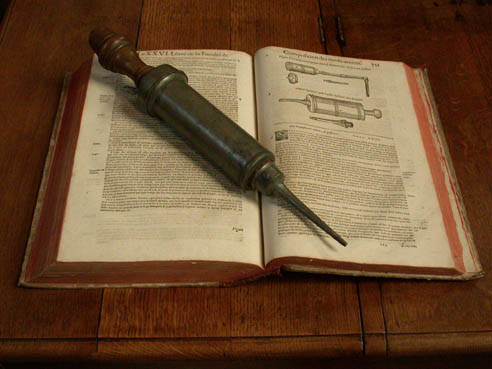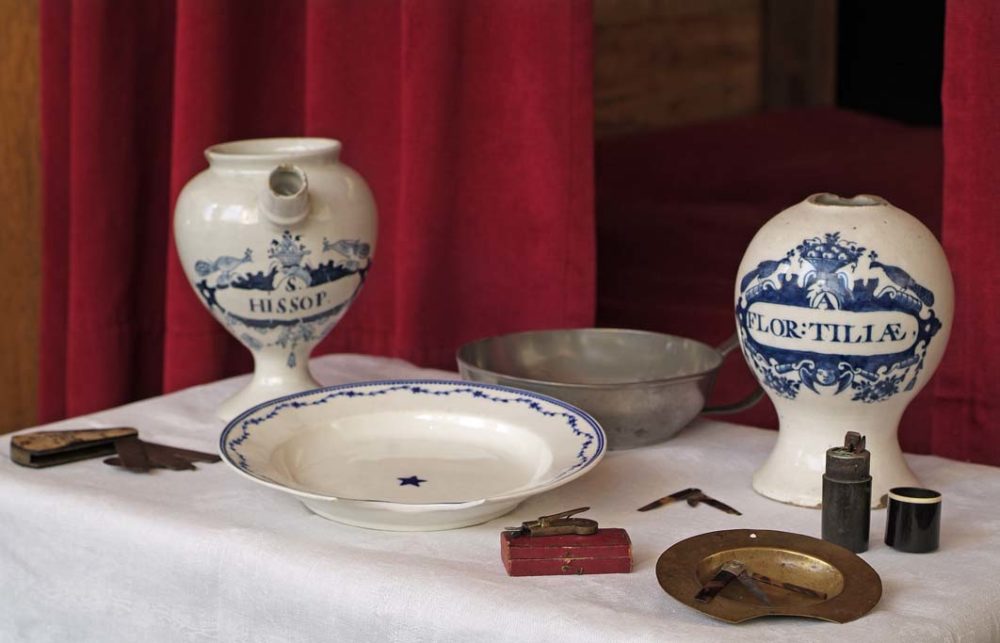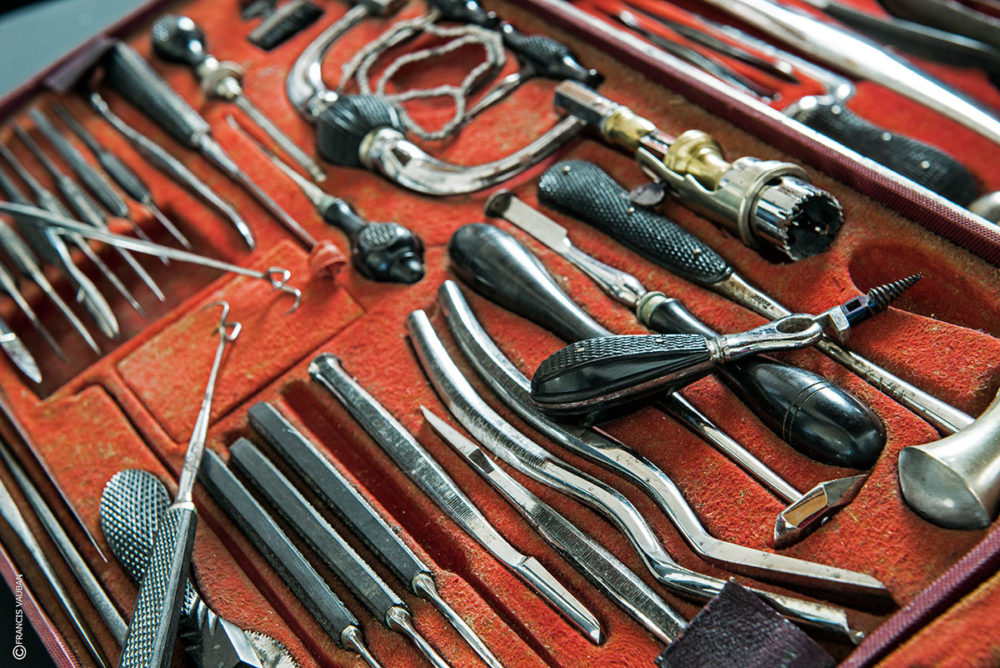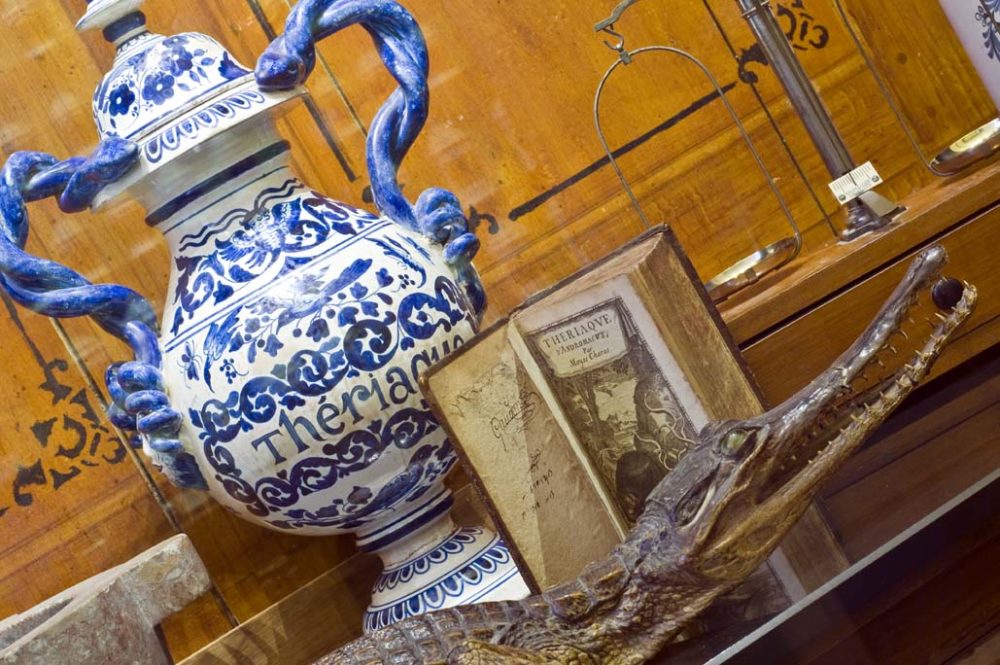The Hospital Notre-Dame a la Rose houses a beautiful collection of medical and pharmaceutical objects. This collection is partly original but some acquisitions were added in recent years.
Initially, the hospital is a charitable institution, as indicated by the etymological origin of its name (hospitality). The works of mercy are practiced in the name of Christian charity. For the nuns who were originally established in this institution and were at the bedside of the poor sick, the care of the soul prevailed over the care of the body. The medicalization of hospital structures and the secularization of their staff are only gradually taking place.

Humoral medicine

These collections give us a clear idea of the treatments and care provided to patients over the centuries. Until the end of the 18th century, doctors interpreted the appearance and development of diseases according to the famous “humoral theory”. According to this theory, developed in antiquity, every body is traversed by four different humors: yellow bile, black bile (atrabile or melancholy), blood and phlegm (or pituite). They are produced by different organs: the liver, the spleen, the heart and the brain. Each individual has a dominant humor and, according to it, a temperament that is attributed to him: sanguine, phlegmatic, bilious or melancholic. In addition, each humor corresponds to particular characteristics or properties (hot, cold, dry and wet). The disease results from an imbalance between these fluids. These can be vicious and corrupt the body and the fragile balance must be restored to improve health. However, the doctor’s intervention is limited to diagnosis and choice of therapy.
Surgical collections
Different therapies, such as bleeding, emetics or enemas, were used to “purge” the body and eliminate vitiated humors. The execution of bleeding is left in the hands of the surgeons while the purging is carried out by the pharmacist. It is up to him to make the proper purgative, on prescription of the doctor.
For a very long time, surgery was poorly considered, underestimated and left in the hands of barber surgeons. Ambroise Paré (around 1510-1590) is considered as the father of modern surgery. The Hospital Museum has, among other things, a remarkable collection of surgical kits, perfectly illustrating the evolution of operative techniques.

Pharmaceutical collections

The hospital’s pharmacy dates back to the 19th century. It seems, however, that the sisters had a pharmacy in the 18th century, at a time when chemistry was going to make a spectacular progress. Previously, most remedies were prepared naturally in the kitchen, according to the saying of Hippocrates: “Let food be thy medicine and medicine be thy food.”
The hospital is extremely lucky to have kept its pharmacy furniture (19th century) as well as its pots, flasks and other mortars and pestles (18th, 19th centuries), probably because the hospital’s pharmacy remained very active for a long time, until the 1940s.
In the new scenography, the pharmaceutical collections have found a place of choice since no less than 3 rooms are devoted to them.
